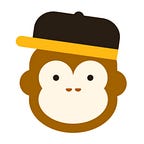10 Common Tagalog Shapes: An Easy List
https://ling-app.com/fil/tagalog-shapes/
It’s now the time to gear up as I present you the 10 common Tagalog shapes in today’s post. If you are ready for that, then let the learning begin!
The Tagalog words for shape are hugis (in singular form) and mga hugis (plural form). Most of the shapes in Tagalog words are coined and adopted from the Spanish language and English language. Moreover, other translations of shapes in Tagalog came from Filipino phrases and tambalang salita (compound words).
I can guarantee you that learning the shapes in Tagalog by just reading this post will help you master the Tagalog words. Considering that the Tagalog language has a considerable resemblance to the English Language in terms of specific details like alphabets and pronunciations, this free app, called the Ling App, will help you thrive more in learning Tagalog words.
Tagalog Shapes
1.Tatsulok (Triangle)
The triangle shape is called ‘tasulok’ in Tagalog. This term came from the Tagalog phrase ‘tatlong sulok,’ which represents the figure of a triangle. This is also a well-known shape of every Filipino child because there are a lot of objects that are similar to this shape, like puno (tree), bundok (mountain), and bulkan (volcano). These living objects are ordinarily seen as a natural site in the Philippines. That’s why parents use these as an example in teaching their children about shapes.
2.Kuwadrado/Parisukat (Square)
The Tagalog word for square is ‘kuwadrado’ or ‘parasukat’. The term ‘kuwadrado’ is similar to the Spanish word ‘cuadrado’ with the same meaning. Philippine objects with a square shape are bintana (window), orasan (wall clock), and jacobina biscuit.
3.Bilog (Circle)
One of the recognized shapes in the Philippines is the circle or ‘bilog.’ This Tagalog term is often associated with other Filipino objects like gin bilog (a Filipino liquor) and hugis bilog sa bagong taon (circle objects and foods in celebrating New Year as a symbol of luck).
4.Habilo/Obalo (Oval)
Oval or ‘obalo’ and ‘habilo’ in Tagalog can also be defined as an egg shape. The difference between these two Tagalog shapes is that the obalo is used as a noun while the habilo is used as an adjective.
5.Bilohaba (Oblong)
This shape is similar to an oval, but the distinction is the oval has two long sides and two short sides which all the angles are right angles. The Tagalog word for oblong is ‘bilohaba’. Sample Filipino objects that have oblong shapes are mais (corn), otap (Filipino cookies), and kapsula (capsule medicine).
6.Kalahating-bilog (Semicircle)
This shape is also called ‘semisirkulo’ and ‘balinugnog’ when used as an adjective in Tagalog. Filipino word like bahaghari (rainbow) is one of the common shapes similar to this shape.
7.Parihaba (Rectangle)
Rectangle in Tagalog is called ‘parihaba’. The Tagalog word haba, which means long, has two long sides in the upper and lower sides, and the angles are right angles. Suppose you search the website and look for Filipino objects with a rectangular shape. In that case, you may encounter one of these: baraha (cards and flashcards), lamesa (dining table), pisara (blackboard), and watawat (flag).
8.Hugis Puso (Heart Shape)
A heart shape is one of the allegorical shapes in the Philippines, which means love. The word puso is also linked to other Filipino foods like puso ng saging (heart of banana) and puso rice (hanging rice in Cebu) because of their shape. Likewise, the Tagalog word for heart shape is ‘hugis puso.’
If you wish to visit the Philippines and are interested in trying the mentioned food above, it’s more fun to take pictures of them and compare if they are similar to the geometric heart shape.
9.Kubo (Cube)
We all know that a cube is a type of three-dimensional shape and oftentimes used by a child to play (Rubik’s cube and dice). Furthermore, there are many Tagalog translations of cube like kuwadrado, tangkalag, and kubo.
On the other hand, Filipino scholars published several Filipino reference books that prefer to use kubo as the Tagalog word for the cube. For this reason, the word kubo has a significant meaning to Filipino architecture, which is the bahay kubo (nipa hut). The figure of the bahay kubo is similar to the cube. Thus, a Filipino author proposed to use the Tagalog word ‘kubo.’
10.Espera (Sphere)
A ball is an example of a sphere-shaped object. In the Philippines, jolen/holen (marbles) are an example of a sphere-shaped object that is frequently used by every child during the ’90s and early ’20s to play with a group of boys. The Tagalog word for the sphere is ‘espera.’
Other Tagalog Shapes
Learn More About Tagalog With Ling App
Want to go deeper in expanding your Tagalog vocabulary? Therefore, I invite you to download Ling App by Simya Solutions. This app will help you by providing free lessons and informational content to study and master your target language.
The Ling app is a user-friendly language learning application that is both accessible on the website and smartphones. Using this great language app can help you boost your vocabulary in your target language. You can also learn by reading our educational blog posts related to the Tagalog language like 28 Tagalog Alphabet: Best Guide For A Beginner, 5 Awesome Characteristics Of Filipino People, and 15+ Common Tagalog Animal Names: Best Tagalog Guide.
More than that, you can learn other foreign languages because the Ling app offers 60+ different languages and minority languages. You can also join a messaging app and send queries or concerns about your target language. Just click the A.I. chatbot and wait for the response from native speakers.
Ready to start-off mastering your target language? Click and download Ling App and enjoy a hassle-free language learning platform now!
